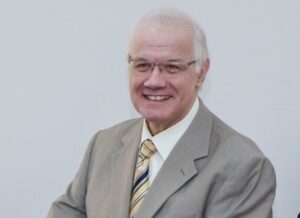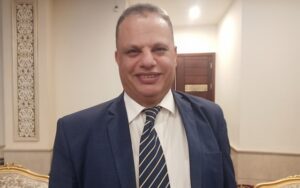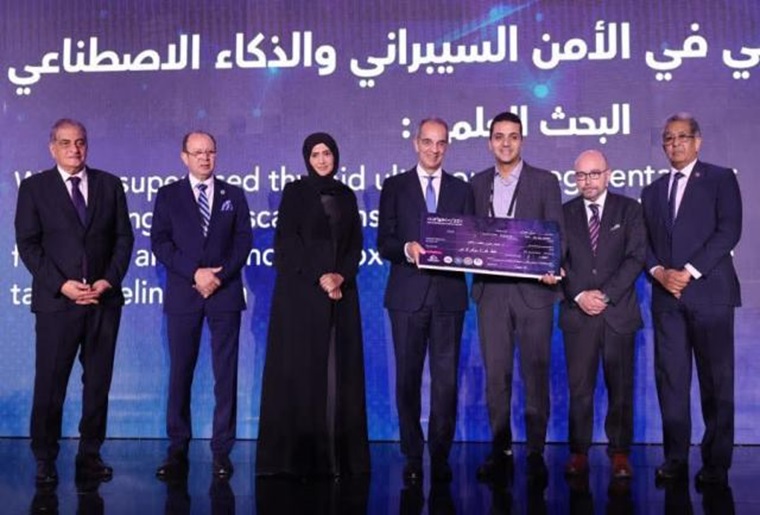فى مجال التشخيص الطبى بالذكاء الإصطناعى باحث بالجامعة المصرية الروسية يحصل المركز الـ3 فى الوطن العربى مستندات
أعلن الدكتور شريف فخرى محمد عبدالنبى، رئيس الجامعة المصرية الروسية، أن الدكتور عمرو طلعت وزير الإتصالات وتكنولوجيا المعلومات، قام بتكريم الدكتور محمد على سالم المدرس بقسم "الذكاء الاصطناعى" بكلية الذكاء الإصطناعى بالجامعة وتسليمه جائزة المركز الثالث للمسابقة العربية البحثية؛ أفضل بحث أكاديمي عربى فى مجال الأمن السيبرانى والذكاء الاصطناعى، وذلك خلال حفل ختام فعاليات الدورة الرابعة من المؤتمر الدولى لأمن المعلومات والأمن السيبرانى "CAISEC’25"، الذى نظمته المنظمة العربية لتكنولوجيات الاتصال والمعلومات.. .
مضيفاً أن تلك المسابقة كانت برعاية الدكتور عبدالمجيد بن عمارة الأمين العام لإتحاد مجالس البحث العلمى العربية، وأن مشاركة الباحث جاءت بدعم من الدكتور محمد كمال مصطفى رئيس مجلس أمناء الجامعة
فى ذات السياق، أوضح الدكتور هشام فتحى، عميد كلية الذكاء الإصطناعى بالجامعة المصرية الروسية، أن البحث الذى قدمه الدكتور محمد على سالم المدرس بقسم الذكاء الاصطناعى فى الكلية، يضع أساسًا واقعيًا لإستخدام تقنيات الذكاء الإصطناعى فى مجالات الطب البشرى، حيث يوفر أدوات تساعد الأطباء فى مختلف المجالات الصحية فى تشخيص أكثر دقة دون الحاجة لتوصيف مكلف أو طويل الآجل، والهدف المقبل هو جعل هذا النموذج جاهزًا للإستخدام الإكلينيكى الفعلى داخل المستشفيات.. لافتاً أن الإشتراك فى تلك المسابقات المرموقة على مستوى الوطن العربى والدولى؛ يأتى فى إطار تحفيز أعضاء هيئة التدريس على التواصل الفعال والإيجابى مع المجتمع الدولى؛ لصقل مهاراتهم وإكتساب خبرات فى شتى المجالات التكنولوجية والتقنيات الحديثة.
من جانبه، أكد الدكتور محمد على سالم، المدرس بقسم الذكاء الاصطناعى بكلية الذكاء الإصطناعى بالجامعة المصرية الروسية، أن ملخص البحث الفائز بالمركز الثالث كأفضل الأبحاث العربية الأكاديمية فى مجالى الأمن السيبرانى والذكاء الإصطناعى، يدور حول تطوير نموذج ذكاء إصطناعى جديد لتحديد حدود العقد الدرقية بدقة فى صور الأشعة فوق الصوتية بإستخدام تعليم بإشراف ضعيف
عنوان البحث هو
“Weakly-supervised thyroid ultrasound segmentation: Leveraging multi-scale consistency, contextual features, and bounding box supervision for accurate target delineation.”
أضاف المدرس بقسم الذكاء الإصطناعى بكلية الذكاء الإصطناعى بالجامعة المصرية الروسية، أن من ضمن الأهداف التى يحققها النموذج الجديد ابتكار إطار عمل ذكى يستخدم فقط مربعات التحديد "Bounding Boxes" وهى سهله وسريعة فى الإنشاء، ويدمج النموذج أربع تقنيات متقدمة لتحسين الدقة
التنبؤ الهرمى "SAC" التى تضمن أن التنبؤات تقع داخل النطاق الصحيح من الصورة، وتقنية التكامل السياقى
"HPC" التى تكرر التنبؤ وتقارن النتائج لتحسين التمييز بين العقدة والخلفية، وتقنية التحسين متعدد المقاييس
"CFI" التى تستفيد من السياق المحيط بالعقدة لفهم أفضل للأنسجة، و أخيراً تقنية دمج التفاصيل الدقيقة
"MPR" التى تدمج التفاصيل الدقيقة والسياق العام من خلال معالجة الصورة على أكثر من مستوى.
قال الدكتور محمد على سالم، أن النموذج الجديد حقق نتائج دقيقة ومبهرة على مجموعتى بيانات "TG3K" و "TN3K"، تتقارب فى جودتها مع نماذج التعليم الكامل، مع تقليل كبير فى وقت ومجهود التوصيف.
مشيراً أن أهمية البحث تتلخص فى:
- تقليل الوقت والجهد اللازم لتجهيز بيانات تدريب الذكاء الاصطناعى.
- تقديم دقة عالية دون الحاجة لتوصيف تفصيلى.
- تمهيد الطريق لإستخدام الذكاء الإصطناعى بشكل عملى وفعال فى المستشفيات.
أفاد المدرس بقسم الذكاء الإصطناعى بكلية الذكاء الإصطناعى بالجامعة المصرية الروسية، أن النموذج الجديد يتميز بالحداثة والتفرد مقارنة بالنماذج السابقة فى عدم الحاجة لبيانات تفصيلية مكلفة، مع تقديم أداء يقارب التعليم الكامل.. موضحاً أن أهمية النتائج فى الحياة الواقعية الإكلينيكية "Clinical Relevance"، أن هذا النموذج يساعد الأطباء فى تقليل زمن التشخيص وتحسين دقة الكشف عن العقيدات، خاصة فى الأماكن التى تفتقر لخبراء بشريين فى التوصيف مثل المستشفيات الريفية أو العيادات الصغيرة.




